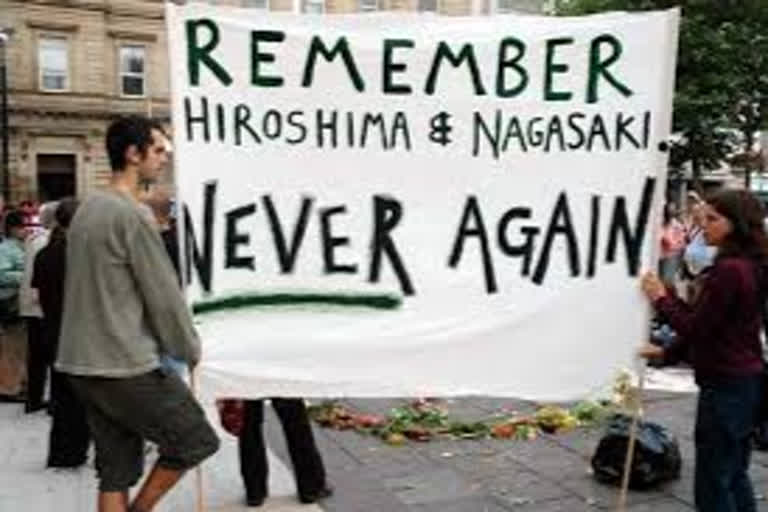Hyderabad:Seventy-five years ago, the United States dropped an atomic bomb on Hiroshima, Japan. The destruction was unlike anything experienced before. Tens of thousands of people died instantly. An entire city was destroyed in the flash of a single bomb.
The two atomic bombs dropped on August 6 and 9, 1945, by the US forces totally destroyed Hiroshima and Nagasaki in an instant and killed and wounded hundreds of thousands of people without discrimination.
With corpses charred black, bodies with their skins peeled off, and with lines of people tottering in silence, a hell on earth emerged. Those who narrowly survived soon collapsed one after another. For more than 75 years since then, people have struggled to live on, afflicted by the delayed effects and by anxiety about the possible effects of radiation on their children and grandchildren.
This year marks the 75th anniversary of the atomic bombings of Hiroshima and Nagasaki. Across the globe, events and commemorations are taking place to mark this historical event, to remember the hibakusha (Atomic bomb survivors), and to say, "Never Again!" to the use of nuclear weapons.
The memorial will be held on August 9 at the World Peace Bell in the Christchurch Botanical Gardens.
The World Peace Bell will be rung to mark the time that the bomb was dropped on Hiroshima. Speakers include Angela Woodward, a disarmament verification specialist, the Mayor’s representative and students Olivia Shimasaki and Sarina Mackey, both reading excerpts from Japanese Hibakusha.
The World Peace Bell provides a direct link with Nagasaki. The pounamu (greenstone) beneath the bell was divided into two and the other half of the stone is under the peace sculpture which Christchurch and 5 other cities gifted to the Nagasaki Peace Park.
There is also a camphor tree planted near the bell which is propagated from the famous one which survived the atomic bombing. It was gifted to Christchurch by the late Nagasaki Mayor Itoh.
This year also marks the 45th anniversary since the late Mia Tay organised the first lantern ceremony in Christchurch to commemorate the atomic bombings of Hiroshima and Nagasaki and remember the dead and surviving Hibakusha (atomic victims) from around the world.
There had been earlier marches organised by Lincoln Efford and the Peace Pledge Union in 1947 and later by Elsie Locke and the Campaign for Nuclear Disarmament in the early 1960s (Press photo attached).
Did Hiroshima and Nagasaki really overcome post Nuclear attack challenges?
Nearly seventy years after the bombings occurred, most of the generation that was alive during the attack has passed away.
Now, much more attention has turned to the children born to the survivors. Regarding individuals who had been exposed to radiation before birth (in utero), studies, such as one led by E. Nakashima in 1994, have shown that exposure led to increases in small head size and mental disability, as well as impairment in physical growth.
Persons exposed in utero were also found to have a lower increase in cancer rate than survivors who were children at the time of the attack.
One of the most immediate concerns after the attacks regarding the future of both Hiroshima and Nagasaki was what health effects the radiation would have on the children of survivors conceived after the bombings.
So far, no radiation-related excess of the disease has been seen in the children of survivors, though more time is needed to be able to know for certain.
In general, though, the healthfulness of the new generations in Hiroshima and Nagasaki provide confidence that, like the oleander flower, the cities will continue to rise from their past destruction.
